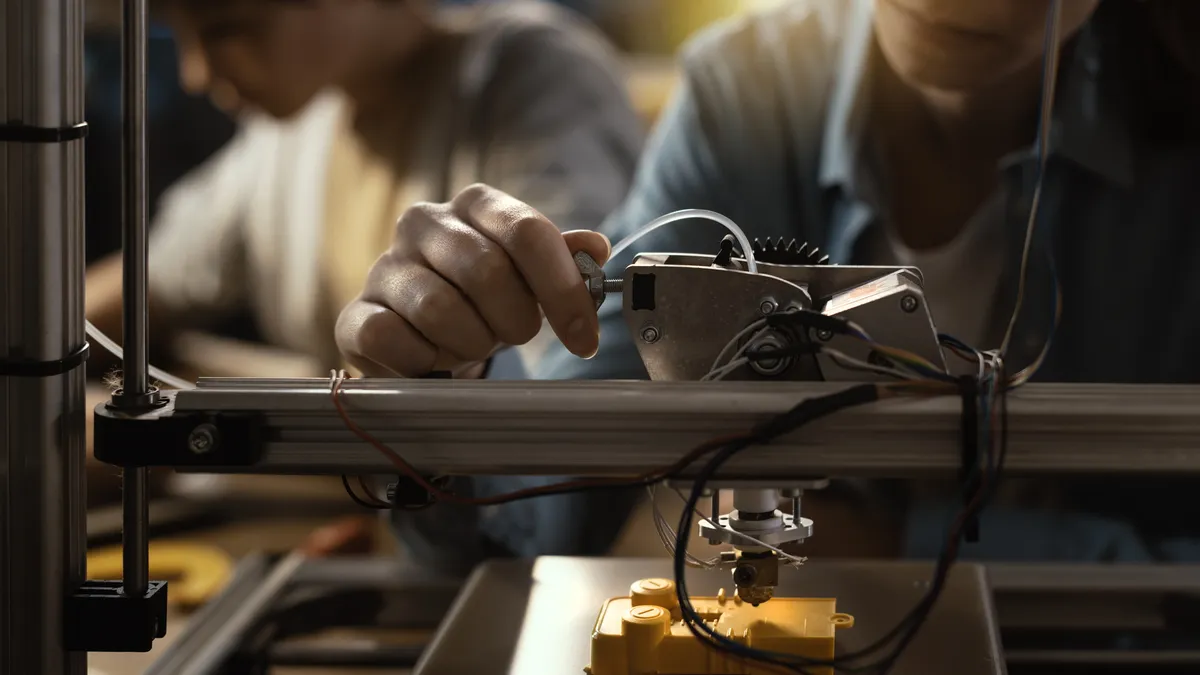Dive Brief:
- Lockheed Martin is expanding its partnership with contract additive metal manufacturer Sintavia to explore using 3D printing as an alternative to traditional castings and forgings, the company announced last week.
- The defense contractor is focusing on 3D printing for its ability to improve manufacturing efficiency and produce parts with greater detail and design opportunities.
- The new collaboration will research additional additive manufacturing technologies such as laser power bed fusion and electron beam-directed energy deposition.
Dive Insight:
Sintavia and Lockheed Martin’s expanded collaboration builds on the Biden administration’s “AM Forward” initiative, aimed at helping small to mid-sized companies adopt additive manufacturing technologies.
Lockheed Martin was among several major OEMs that made public commitments to participate in the initiative when it was announced in May. The companies, including firms such as Honeywell and Boeing, pledged to purchase additive parts from small to mid-sized enterprises, and offer training and technical assistance to help their suppliers integrate new additive technologies.
Additional commitments Lockheed Martin outlined in its March 2022 letter of intent include:
- Work with suppliers to explore additive manufacturing techniques as an alternative to castings and forgings;
- Work with AM Forward participants and government agencies to establish a consortium to share material properties and design data and to develop a framework for an “Approved Supplier List” to simplify the procurement process of additive parts;
- Share existing Lockheed Martin additive manufacturing learning resources with suppliers when able; and
- Work with the community and technical college partners to explore adding additive to the advanced manufacturing program and engage with regional suppliers to scale the program.
Partnering with Sintavia will specifically help the defense contractor to fulfill its first goal of researching alternatives to traditional manufacturing methods.
“Our partnership with Lockheed Martin seeks to identify and streamline manufacturing inefficiencies, specifically in the production of flight critical structures,” Sintavia founder and CEO Brian Neff said in a statement.
The defense contractor’s participation in the White House initiative lends itself to the company’s development of hypersonic weapons. 3D printing can open up the design space for parts, making it ideal for tackling engineering problems that come with building systems that travel at extreme speeds.
By helping to deploy additive manufacturing equipment throughout its suppliers’ operations, Lockheed Martin is also establishing a needed supply base for hypersonic weapons parts, as the government increasingly calls on defense contractors to produce the advanced technology.
“Sintavia and Lockheed Martin are committed to improving the capability, agility and competitiveness of the defense industrial supply base,” Neff said.















